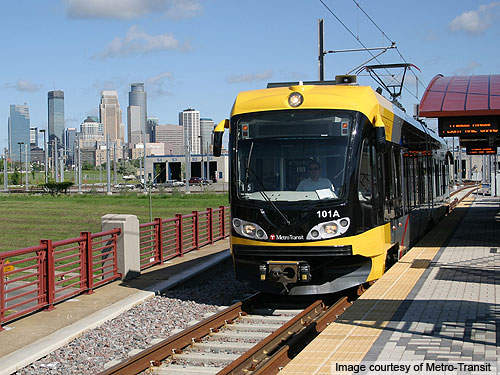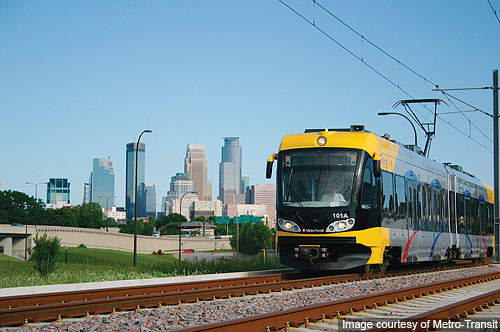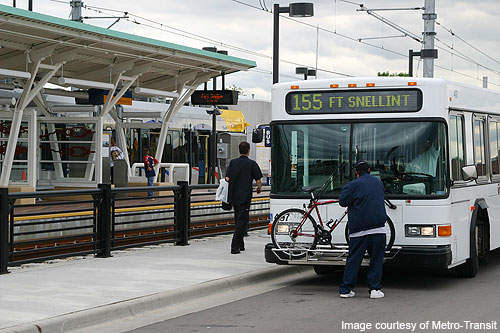The Hiawatha Line is a 12-mile light rail transit system connecting three popular destinations in the twin cities of Minneapolis and Bloomington. The line connects Minneapolis, St. Paul International Airport and the Mall of America in Bloomington. It is owned by the Metropolitan Council and operated by Metro Transit, the regional transport authority. Hiawatha Line is the first intercity light rail transit after the closure of the electric rail service in 1954.
Construction on the line began in January 2001 and the line was opened in 2004. In the first five years of service, passengers boarded the trains around 42.9 million times. The passenger rider-ship in 2010 was 10.5 million.
The $715.3m project received funding from the federal government ($334.3m), the State of Minnesota ($100m), the Metropolitan Airports Commission ($87m), Hennepin County ($84.2m) and the Minnesota Department of Transportation ($20.1m). The project also received special grants of $89.7m from Congestion Mitigation / Air Quality and Transit Capital.
Lines and routes
The Hiawatha Line starts from Target Field station in downtown Minneapolis and terminates at the Mall of America Station in Bloomington. It stops at seven stations in downtown Minneapolis, eight stations in Minneapolis and three stations in Bloomington.
Project
The Hiawatha Line serves the major traffic generating areas of the corridor such as the downtown Minneapolis, University of Minnesota, the airport and Mall of America areas. In addition, the project intends to develop the corridor with a 2020 target of having 7,200 new housing units, a new commercial area of more than 19 million square feet while creating more than 67,000 new jobs.
The project remained well within budget despite having 660ft tunnels under Minnehaha Park and twin bored tunnels of 7,400ft with two stations under the airport.
The project also involved construction of two bridges at Hiawatha Avenue and Crosstown.
Trains have been designed to travel at a top speed of 55mph. However, they normally travel at a speed of 40mph not exceeding more than two minutes of travel time between two stations. In the downtown area, trains travel at a relatively low speed.
Trains operate at headway of 7.5 minutes during peak hours and at 10 minutes during non-peak hours. In the early evenings (18:00 to 21:00), they travel at headway of 15 minutes while in the early mornings and late evenings they travel at headway of 30 minutes.
Infrastructure
The Hiawatha Corridor is powered by an overhead contact system (OCS) operating on 750v DC power.
There are 19 stations on the route. The station platforms have ramps and tactile edges and are fully compliant with the Americans with Disabilities Act (ADA). They are built in alignment with train doors for safe and easy boarding. Elevators are provided at stations on bridges.
All the stations have feeder bus facilities. Around 46 Metro Transit bus routes connect to the 14 stations with timed transfers.
Park and ride facilities are provided at Lake Street and Fort Snelling stations in Minneapolis and 28th Avenue station in Bloomington. Fort Snelling and 28th Avenue stations are the major stations on the route with 1,080 and 1,550 parking bays.
The route also hosts a maintenance yard of 26.5 acres between Cedar and Franklin Avenues in Minneapolis.
Rolling stock
The rolling stock includes a fleet of 27 Bombardier Flexity Swift cars. The Hiawatha Line is serviced by a coupled car-set measuring 94ft x 8.8ft and can accommodate 66 seated and 180 standing passengers.
The light rail vehicles (LRV) have 70% low floor design to facilitate easy navigation of passengers. These trains are similar to the ones already operating in European cities such a Cologne, Germany, Stockholm and Sweden.
Each of the cars has four luggage racks and four bicycle hangers.










